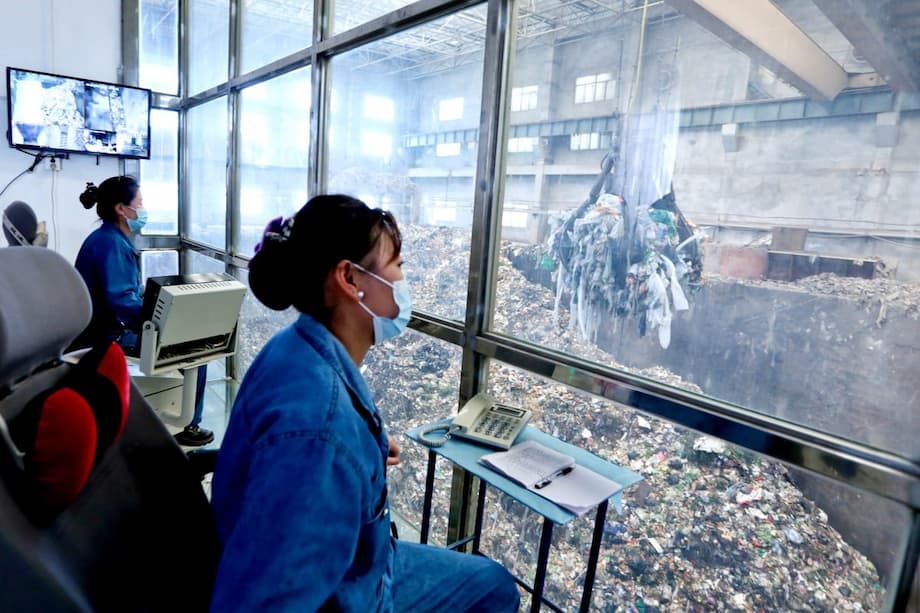China’s Incinerator Oversupply: A Hidden Crisis in Waste Management
China, long known for its rapid industrial expansion and ambitious infrastructure projects, now faces an unexpected dilemma: a glut of waste-to-energy incinerators with not enough trash to burn. While the world’s attention has often focused on China’s overcapacity in steel, solar panels, and other manufacturing sectors, the waste incineration industry has quietly become a symbol of over-optimism, policy contradictions, and the complex challenges of modern waste management.
- China’s Incinerator Oversupply: A Hidden Crisis in Waste Management
- How Did China Become the World Leader in Incineration Capacity?
- Policy Contradictions and Data Challenges
- Environmental and Health Concerns
- Lessons from Abroad: Comparing China’s Experience
- Rethinking Waste Management: Toward a Circular Economy
- In Summary
At the heart of the issue is a mismatch between the country’s enormous investment in incineration capacity and the actual volume of municipal solid waste available for processing. This disconnect is driven by a combination of slowing urbanization, economic headwinds, and the success of waste sorting and recycling initiatives. The result: idle incinerators, wasted investments, and growing questions about the future of China’s waste management strategy.
How Did China Become the World Leader in Incineration Capacity?
Over the past decade, China has pursued an aggressive policy of building waste-to-energy (WtE) incinerators. The goal was twofold: to tackle the mounting problem of urban waste and to generate electricity from garbage, reducing reliance on landfills and fossil fuels. By 2023, China had more incineration capacity than any other country, with over 1,010 incineration enterprises and a daily processing capacity of around 1.11 million tonnes—more than double the capacity reported just four years earlier.
This rapid expansion was fueled by government targets and subsidies. The Ministry of Housing and Urban-Rural Development (MoHURD) set ambitious goals for increasing incineration rates, prompting local governments and private firms to rush into the sector. Incinerators were seen as a modern, efficient solution to the country’s waste crisis, and the industry attracted significant investment from both domestic and international players.
However, the optimism that drove this boom failed to account for several critical factors that would soon undermine the sector’s viability.
Slowing Urbanization and Economic Growth
China’s urbanization rate, which had been a major driver of waste generation, has begun to plateau. As the pace of city expansion slows and the economy faces headwinds, the growth in municipal solid waste has not kept up with projections. According to the Ministry of Ecology and Environment, China collected and transported over 262 million tonnes of municipal solid waste in 2023—an 11% increase from 2019. Yet, during the same period, incineration capacity more than doubled.
This mismatch means that, on average, China’s waste incinerators are operating at just 60% of their designed capacity. In some regions, plants sit idle for weeks at a time, unable to secure enough waste to justify continuous operation.
The Impact of Mandatory Waste Sorting and Recycling
Perhaps the most significant—and ironic—factor contributing to the oversupply crisis is the success of China’s own waste sorting and recycling policies. In 2019, Shanghai launched the country’s most ambitious garbage separation program, requiring residents to meticulously sort their waste into categories such as recyclables, wet waste, hazardous waste, and residuals. The program, now rolled out in most major cities, has dramatically increased the recovery of recyclables and organic matter, diverting them away from incinerators and landfills.
For example, in Shanghai, the proportion of waste diverted from incineration or landfill rose from 21% in 2018 to 54% in 2021. As a result, incinerators in the city and elsewhere are struggling to find enough “fuel” to keep running. In May 2023 alone, there were 8,499 planned stoppages at waste-to-power plants nationwide, with some facilities idle for more than half the month.
This paradox—where environmental progress undermines the economics of incineration—highlights the challenges of coordinating waste management policies across different government agencies and levels.
Policy Contradictions and Data Challenges
The oversupply crisis is not just a matter of miscalculation; it is also a product of conflicting policy incentives and unreliable data. While the Ministry of Ecology and Environment (MEE) is responsible for environmental oversight, MoHURD manages waste collection and disposal. The two ministries have sometimes set targets and metrics that work at cross-purposes.
For instance, in 2021, the key metric for recyclables was changed from “recycling rate” to “resource recovery rate,” which includes both recycling and incineration. This shift inadvertently incentivized the construction of more incinerators, even as recycling rates climbed. Local governments, eager to meet targets and secure subsidies, sometimes overestimated waste collection figures or built more capacity than needed. In some cases, firms overbuilt plants in anticipation of future demand that never materialized.
Only Shanghai regularly publishes data on the quantities of recycled waste, making it difficult to assess the true scale of the problem nationwide. According to researchers, by 2022, the national overcapacity figure for incinerators was over 100%, with at least 12 provincial-level regions affected.
Financial and Operational Strains
Waste-to-energy plants in China rely heavily on government subsidies to remain profitable. However, many have struggled to receive timely payments, further straining their finances. With reduced waste volumes, unpaid subsidies, and rising operational costs, the profitability of the sector is increasingly in doubt.
Moreover, the rush to build incinerators has sometimes led to poor resource sharing and inefficient plant locations, exacerbating regional disparities in capacity utilization.
Environmental and Health Concerns
While incineration has helped reduce the sprawl of landfills in China’s cities, it has also introduced new environmental and health risks. Modern waste-to-energy plants are designed to capture and treat emissions, but concerns remain about the release of toxic substances such as dioxins, furans, and heavy metals. Studies have shown increased health risks for communities living near incinerators, including higher rates of respiratory illnesses and cancer.
Incinerators also produce hazardous byproducts, such as fly ash and bottom ash, which require careful handling and disposal. China’s standards for treating these residues are still evolving, and improper management can lead to soil and water contamination.
From a climate perspective, waste-to-energy plants are not as green as they might seem. The carbon intensity of electricity generated from incineration is often higher than the national average for power generation, especially when plastics and other fossil-derived materials are burned.
Public Resistance and Social Acceptance
Public opposition to incinerators has been a recurring theme in China’s waste management story. Protests have erupted in cities like Wuhan, where residents feared the health impacts of new incineration projects. In response, some local governments have shelved or delayed plant construction, adding further uncertainty to the sector’s outlook.
Social acceptance is crucial for the success of waste-to-energy projects. Negative experiences, lack of transparency, and inadequate communication have fueled mistrust and resistance among affected communities.
Lessons from Abroad: Comparing China’s Experience
China is not alone in grappling with the challenges of waste-to-energy incineration. Countries like Vietnam and Indonesia have also invested in WtE plants as a solution to mounting waste problems, but have encountered similar issues of overcapacity, high costs, and environmental concerns.
In Vietnam, for example, the government has promoted WtE as a way to reduce landfill use and generate electricity. However, barriers such as lack of supportive policies, high investment costs, and limited public understanding have slowed progress. Health and environmental risks, especially from older plants with inadequate emission controls, remain a major concern. Public resistance and legal challenges have also complicated the rollout of new facilities.
Indonesia, facing a plastic waste crisis, has announced plans to build incinerators in major cities. Yet, critics argue that burning trash is not a sustainable solution, citing toxic emissions and limited impact on overall waste reduction. The country’s Supreme Court even ordered the government to revoke regulations promoting incineration, emphasizing the need for waste reduction and recycling instead.
In developed countries like Australia and New Zealand, the debate over waste-to-energy continues. While some see incineration as a way to address both waste and energy needs, others point to the environmental risks and the importance of prioritizing recycling and waste reduction. In Europe, several countries are now restricting new incinerator construction to encourage higher recycling rates and lower emissions.
Rethinking Waste Management: Toward a Circular Economy
The crisis of incinerator oversupply in China underscores the need for a more holistic and coordinated approach to waste management. Experts argue that the guiding principle should be the waste hierarchy: prioritize reduction, reuse, and recycling, with incineration and landfill as last resorts.
Building more incinerators may provide a short-term solution to landfill shortages, but it risks locking cities into a cycle of overcapacity, financial losses, and environmental harm. Instead, policymakers should focus on:
- Improving data collection and transparency to better match capacity with actual waste volumes
- Coordinating policies across government agencies to avoid contradictory incentives
- Investing in recycling infrastructure and public education to maximize resource recovery
- Ensuring strict environmental standards and monitoring for existing and future incinerators
- Exploring regional sharing of facilities and improved rural waste collection to balance capacity
Ultimately, the goal should be to move toward a circular economy, where waste is minimized, resources are reused, and environmental impacts are carefully managed.
In Summary
- China has built the world’s largest waste-to-energy incineration capacity, but much of it sits idle due to slowing urbanization, economic changes, and successful waste sorting policies.
- Policy contradictions and unreliable data have contributed to overcapacity, with many plants operating at just 60% of their designed capacity.
- Environmental and health concerns, as well as public resistance, complicate the future of incineration as a waste management strategy.
- Other countries in Asia and beyond face similar challenges, highlighting the need for careful planning, strict standards, and a focus on waste reduction and recycling.
- Experts recommend prioritizing reduction, reuse, and recycling, with incineration as a last resort, to achieve sustainable and effective waste management.




